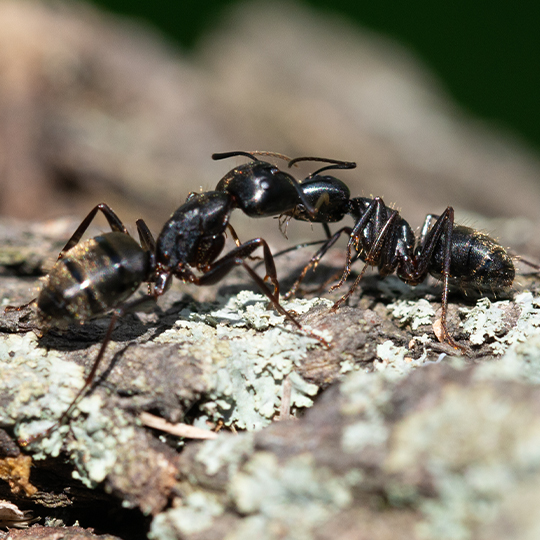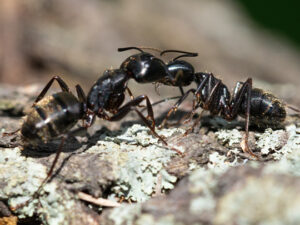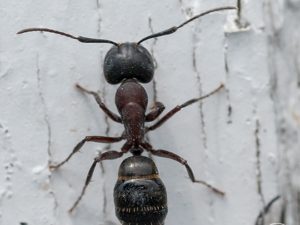
Ants are everywhere in New York State. From bustling urban streets to quiet suburban gardens and even rural woodlands, these fascinating insects play an essential role in the ecosystem. However, when they wander into your home or business, they go from fascinating to frustrating. Understanding the different ant species in NY can help you identify and manage these tiny invaders effectively.
This guide will explore the most common ant species found in New York, how to identify them, and insights into their behavior. By the end, you’ll feel more equipped to handle any ant encounter, whether it’s in your home or while enjoying the great outdoors.
Why Understanding NY Ant Species Matters
Ants play crucial roles such as aerating soil, recycling nutrients, and even controlling pests. However, when they enter your living spaces, they can contaminate food, cause structural damage, or even bite and sting. Accurately identifying the type of ant you’re dealing with is the first step in addressing any ant-related problems.
A better understanding of ant species also gives us insights into protecting our environment. Each species has a unique behavior and ecological function, making them a vital part of our natural world.
Now, let’s look at the most common types of ants you’re likely to encounter in New York State.
The 7 Most Common Ant Species in New York State
1. Odorous House Ant (Tapinoma sessile)
Identifying Features
- Small, measuring 1/16 to 1/8 inch in length
- Brown to black coloring
- Emits a foul, rotten coconut smell when crushed
Behavior
Odorous house ants are one of the most common indoor pests in New York households. They forage for sugary foods and are particularly attracted to spills, crumbs, or pet food. These ants often trail in large numbers and build shallow nests inside walls, under floors, or even within insulation.
Control Tips
- Seal cracks in walls and foundations to limit access.
- Keep food stored in airtight containers and clean spills promptly.
2. Carpenter Ant (Camponotus spp.)
Identifying Features
- Large ants, ranging from 1/4 to 1/2 inch in size
- Black, brown, or red and black coloring
- Smooth, rounded thorax
Behavior
Carpenter ants are infamous for their wood-chewing habits. Unlike termites, they don’t eat wood but excavate galleries to build their nests. Their presence near wooden structures is often a red flag for water damage or decay.
Control Tips
- Inspect wooden areas for signs of sawdust or hollow-sounding wood.
- Repair water leaks and remove rotting wood near your home.
3. Pavement Ant (Tetramorium immigrans)
Identifying Features
- Very small, about 1/8 inch in length
- Brown to black coloring with grooved lines on the thorax
- Two-segmented waist
Behavior
Often seen scuttling along sidewalks and driveways, pavement ants build nests under concrete slabs, stones, and pavements. They sometimes invade homes, especially during colder months, to seek warmth and food. Pavement ants are generalists, feeding on sugary spills, grease, and small crumbs.
Control Tips
- Address cracks in driveways and walkways.
- Use bait traps to reduce ant populations.
4. White-Footed Ant (Technomyrmex difficilis)
Identifying Features
- 1/8 inch in size
- Dark brown to black body with pale, yellowish-white feet
Behavior
White-footed ants are not aggressive but can be persistent invaders. They are commonly found in yards, decks, and kitchens. Their colonies are quite large and can contain thousands of workers, which makes them difficult to eradicate.
Control Tips
- Clear vegetation from around your home’s perimeter.
- Work with professional pest control to handle large infestations.
5. Citronella Ant (Lasius spp.)
Identifying Features
- Medium-sized ants, about 1/4 inch in length
- Yellow to orange coloring
- Citronella-like odor when crushed
Behavior
Citronella ants are frequently mistaken for termites because of their yellow color and their appearance in homes during swarming events. However, they are less destructive and are primarily seen outdoors in soil or under logs. Swarming inside is usually a sign of moisture problems in the home.
Control Tips
- Look for and repair moisture-prone areas in basements or crawl spaces.
- Remove debris or wood piles close to your home.
6. Pharaoh Ant (Monomorium pharaonis)
Identifying Features
- Tiny, measuring 1/16 inch in length
- Light yellow to reddish-brown with no shading
Behavior
Pharaoh ants are notorious for being difficult to control because they build nests in hidden, inaccessible areas like wall voids and electrical outlets. They are known to forage far and wide for food, feeding on sweets, proteins, and grease.
Control Tips
- Avoid DIY treatments, as they may cause nests to split and multiply.
- Utilize professional-grade baits for effective removal.
7. Field Ant (Formica spp.)
Identifying Features
- Medium to large ants, from 1/4 to 1/2 inch long
- Black, brown, or reddish coloring
- Uneven thorax and a single-segmented waist
Behavior
Field ants are common in suburban yards and parks. They build large mounds and forage for a mix of plant materials and insects. While less likely to invade homes, they can harm young plants and may aggressively defend their nests.
Control Tips
- Knock down mounds when first noticed to prevent establishment.
- Use insecticidal treatments targeted at the mound for better results.
Tips for Preventing Ant Infestations
While each ant species has its own habits and preferences, the following tips can help you reduce the risk of infestations in your home:
- Seal Cracks and Gaps: Inspect your home for entry points and seal them with caulk.
- Keep Food Sealed: Store food in airtight containers and clean up crumbs or spills immediately.
- Maintain a Clean Environment: Regularly wipe down countertops, vacuum, and dispose of trash.
- Inspect the Yard: Remove rotting wood, leaf piles, and excess moisture to deter ants near your home.
- Monitor Moisture Levels: Repair leaks and address water damage promptly to prevent nesting indoors.
Take Charge of Your Ant Problem
Understanding the most common ant species in New York State provides a strong foundation for identifying and addressing problems early. Whether it’s the wood-munching carpenter ant or the pavement ant trailing through your kitchen, knowing what you’re dealing with will help you choose the right solutions.
However, if the problem becomes unmanageable, don’t hesitate to contact a pest control professional. They have the expertise and tools to provide long-term solutions.
Spot any ants in your home? Start by using this guide to identify them, and take immediate steps to mitigate the issue. A proactive approach will save you time, money, and a lot of frustration.











